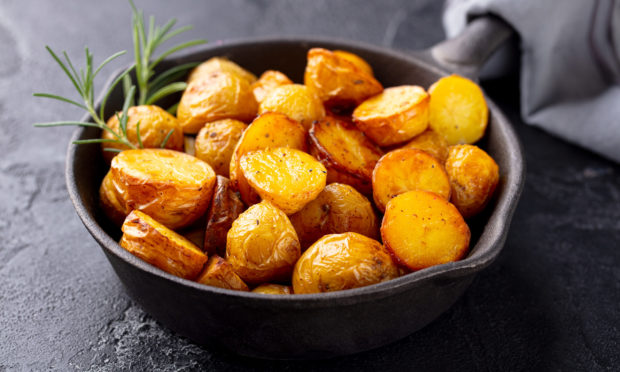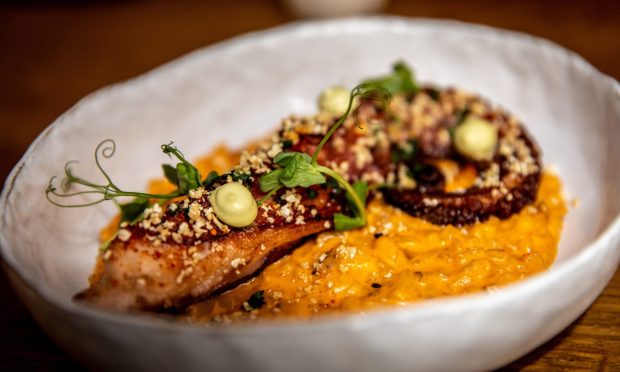Find out how to cook your potatoes to perfection with our handy guide, paired with some delicious recipes.
So many of our favourite dishes start with one of our diet staples – potatoes.
Whether you prefer them being the star of the show by way of a baked potato, a side dish as roasted or mashed potatoes, or even if you live for your chips and cheese, potatoes play an important part in our lives.
Naturally gluten free and with more potassium in them than a banana, as well as almost half your daily requirement of vitamin C, perfecting the humble potato is an important life skill – arguably almost as vital as learning to drive, learning to tie your own shoelaces and even how to fold your own laundry.
But do you know your waxy potatoes from your starchy ones? Or your King Edward from your Duke of York? Put your skills and knowledge to the test, and perfect your potato dishes, with these top tips below.
Mashed potatoes
Every meat’s best friend is a side of mash, but charging at your sack of tatties with a masher won’t always get the best results and you may end up with dreaded lumps in the process.
In this video below, one recipe requires the potatoes to be squeezed through a garlic press, rather than mashed with the traditional potato masher. We’ll give anything a go on our journey to potato enlightenment…
Common mistakes with mash:
- Using the wrong type of potato.
You may not know this but there are two types of potato – starchy and waxy. The starchy kind (rousett, Yukon etc) are the best kind for making the ultimate mash. Starchy are lighter, fall apart when boiled and become more fluffy when cooked, whereas the waxier kind (e.g. new potatoes) are the sort you’d use for potato salads or roasties – they hold their shape well and won’t mash perfectly. - You’ve got your butter ratio wrong.
Butter to spud ratio is important – if you have too much butter then your potatoes won’t be creamy, if you don’t use enough then you won’t be able to achieve optimum fluffy level. Saying that, using butter and only butter is almost a sin so we’d recommend using recipes that require milk and/or cream to make your eating experience even better. - Not seasoning the potatoes properly.
Adding salt to the water as it is coming to the boil as well as to the mash once the cream, cheese, herbs and whatever else you fancy has gone in will bring out the optimum flavour. Starchy foods can taste a bit bland on their own but a pinch of salt can do the trick in honing in on the yumminess. Just remember to taste as you go so as not to over-salt.
Baked potatoes
Baked potatoes had their moment in the sun over lockdown when comedian Matt Lucas made a song titled ‘Thank you baked potato’ to support the NHS and encourage us all to stay at home and… bake potatoes? No, I’m not quite sure either.
Nonetheless, baked potatoes are the one of the ultimate comfort foods that work well throughout the year and allow you to tailor them to suit your tastes – whether you want to add beans, cheese, butter or opt for a vegan alternative like the post below…
https://www.instagram.com/p/CEGZl7fp66m/
Common mistakes when making baked potatoes:
- Soggy spuds.
There is nothing worse than popping the tatties in the oven to bake, preparing your fillings, constructing your masterpiece then finding out the skins are too soggy when you come to eat it. Avoid this by ensuring the potatoes are moisture-free when they go into the oven – if required, pat them dry with some kitchen roll. - You wrap them in foil.
For the best flavour and texture, baked potatoes need to be cooked all the way through. Wrapping them in foil, or even putting them in an oven dish – not a flat baking sheet – prevents the air getting at them from all sides. - The oven is at the wrong temperature.
According to some fellow foodies, the key to achieving the perfect baked potato is making sure your oven is at the right temperature. If you have time, cook the potatoes for 1½ hours in the oven at 150ºC. If you don’t have that much time then reduce the time to around 40 minutes and increase the temperature to approximately 225ºC. Eat straight away as the longer they are left to cool, the less able they are to hold their texture and structure.
Roast potatoes
What better way to compliment your Sunday lunch than with the perfect roasties? Perhaps the easiest type of potatoes to make, roast tatties come out best if you use varieties like King Edward or Maris Pipers. They just need to be placed in a baking tray or dish, covered in whatever herbs and oils you wish to use (we recommend some sprigs of rosemary, splash of oil and some garlic cloves) and popped in the oven.
Check out celebrity chef Jamie Oliver’s top tips to perfect roasties in this video below.
Common mistakes when making roast potatoes:
- Too much moisture.
Perfect roast potatoes have just the right amount of crispiness, but if you overuse the oil at the beginning of the cooking process, it can leave your potatoes soggy. Avoid dousing them in oil and, before putting them in the oven, boil them for 10 minutes in salted water then fluff the edges by tossing them in a sieve. - Not completely cooked.
As with the other types of potatoes, the heat of the oven needs to be able to make it’s way into the tatties from all angles. When it comes to roast potatoes, don’t shove them all in the one baking dish or tray if they are going to be stacked on top of each other and close together. Arrange it so there’s at least a pinky finger-width of space between each one, putting a few baking dishes in the oven at once if you have to. - Bad timing.
Getting the cooking time right for roasties is just as important as eating them. The bigger the potatoes, the longer they will take to cook. As a general rule of thumb, cook them between 210ºC and 220ºC for 30 minutes in the oven. Check on them after 10 minutes of cooking and, rumour has it, if you shake the baking dish a little it makes them extra crispy.
Hasselback potatoes
Can you really call yourself a potato expert if you haven’t at least tried to make hasselbacks? These are baked potatoes that are sliced into fan shapes by not slicing all the way through and leaving a couple of centimetres at the bottom.
Named after Hasselbacken, a restaurant in Stockholm restaurant where it was first served, they are perfect as an accompaniment, lunch alternative or even as a canape.
Here’s a video showing one way to make the ultimate hasselbacks:
A common mistake when making Hasselbacks:
- Wrong type of potato.
According to Nigella Lawson, new potatoes work best for Hasselbacks, as the waxier the potato the better.










